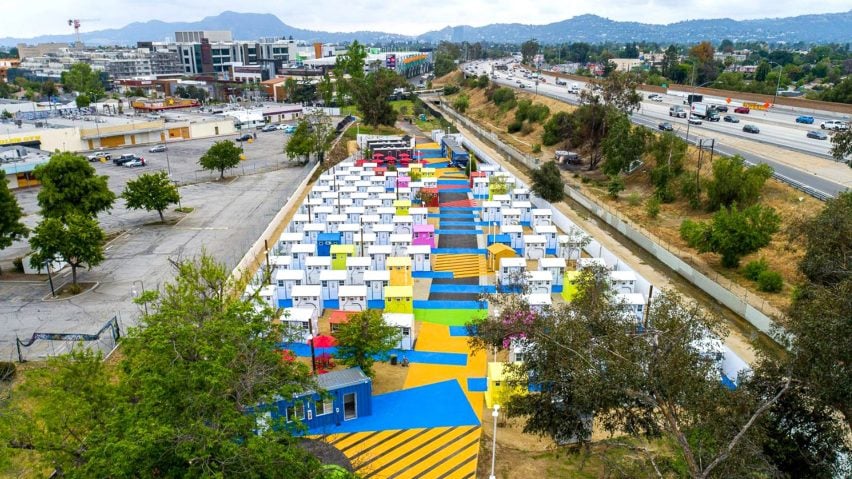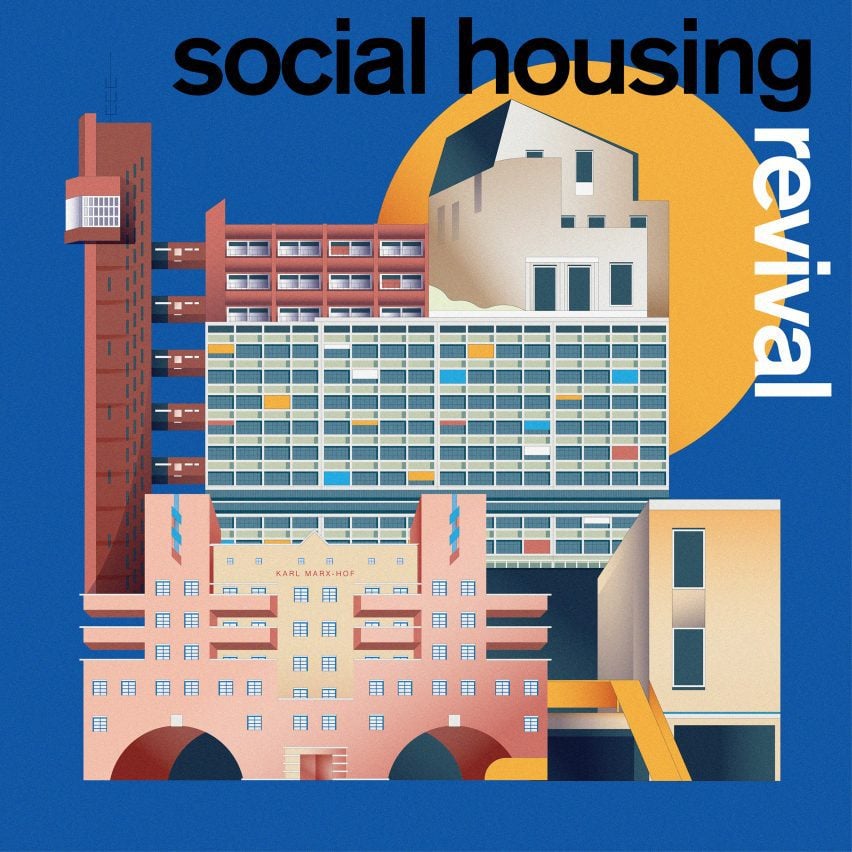
"Tiny homes are not the big solution to homelessness that we need"
Micro homes are not a humane response to the homelessness crisis, writes Cynthia Griffith as part of our Social Housing Revival series.
Homelessness has reached a historic high in the United States of America, casting a long, formidable shadow over millions of low and middle-income workers. According to the United Nations, homeless people represent more than 2 per cent of the global population and an astonishing 1.6 billion people are enduring inadequate housing conditions worldwide.
Contrary to the misguided popular narrative that implies homelessness is the result of one or more personal flaws, studies continue to prove that it is housing, and specifically a lack of affordable housing, causing the current crisis.
It may seem that such a drastic housing problem deserves a cutting-edge design solution. That line of thinking usually manifests itself in various forms of micro home – the basic idea being to provide some form of shelter at the lowest possible cost to cash-strapped public bodies. Things like weather-proof cardboard boxes, underground domes, pallet shelters, and insulated tents have all made their way to the drawing board.
'We shouldn't be reinventing the wheel, or rather the floorplan'
But these so-called solutions are neither permanent nor practical. They do not properly address the root causes of the homelessness problem. And they are not humane enough to address what is undoubtedly a humanitarian crisis. When it comes to building housing for the homeless population, we shouldn't be reinventing the wheel, or rather the floorplan.
"We actually know how to solve this crisis," National Homelessness Law Center senior policy director Eric Tars told me. "We don't need a new, innovative solution."
According to Tars and his colleagues, rather than devising new ways to fit basic domestic amenities into micro-units and impossibly small spaces, architects should be vying for the expansion of social housing, and prioritizing projects that mass produce substantial, properly sized homes. Not only is this more cost-effective and environmentally friendly in the long run, but it's also the most humane way to combat homelessness.
Tiny homes look relatively glamorous when they're fitted with the latest modern amenities and meticulously decorated to impress those viewing reels on architecture TikTok, but in reality, the tiny lifestyle is often not fit to scale.
Trying to squeeze basic domestic necessities into spaces the size of prison cells has garnered some pretty devastating results. There have been notorious incidents where trendy tiny homes went up in flames and the homeless veterans inside them were forced to relive warlike trauma as the walls of these contraptions literally melted down around their ears.
Constructions like this that are fire hazards are not environmentally friendly. In fact, they can contribute to the raging wildfires we must already contend with, particularly in places like California, where the homeless population is higher than anywhere else in the United States.
Everyone – including people who are street homeless – should be able to live in a substantial, properly sized home
The US, as a nation, has collectively spent millions of tax dollars constructing pint-sized pallet shelters that are either too small or too cheaply made to safely house even the most basic domestic features. These constructions lack things like electricity, wi-fi, running water, and even private bathrooms. Should we, in the future, succeed in designing even tinier toilets and microscopic wi-fi routers, it would only take the tiny trend to even greater extremes.
Like an over-enthusiastic hairdresser, there always lies the temptation for urban planners to just keep trimming housing down until the final product resembles something closer to a closet than a house. Take, for example, the coffin homes of Hong Kong, their moniker a haunting reminder that they are about the same size as a hollow grave, with interiors as grim as a reaper.
Tenants in these tiny abodes are too cramped to even stand and are forced to spend all of their indoor leisure time sitting or sleeping due to the confines of the three-by-six-foot space. Many of these micro units are fitted with itty bitty toilets, small lights, and electric fans. Some of them even sport television sets and microwaves.
But do our fellow humans really deserve to live in a room the size of a cage? What does this say of how we really feel about our houseless neighbors?
"Adequate housing is about more than just the bare minimum needed for subsistence," said Tars. "It's about creating a healthy place where people can achieve their full potential as human beings and live a dignified life. If we're stripping things out that contribute to that essential feature, including space, then it's not going to be adequate housing."
Tiny homes are not the big solution to homelessness that we need. Where we live plays a huge part in who we are and how other members of society view us. In a civilized society, everyone – including people who are street homeless – should be able to live in a substantial, properly sized home.
Cynthia Griffith is a US-based journalist specialising in social justice and environmental issues. She writes for homelessness magazine Invisible People and has personal lived experience of homelessness.
The photo is courtesy of Lehrer Architects.

Social Housing Revival
This article is part of Dezeen's Social Housing Revival series exploring the new wave of quality social housing being built around the world, and asking whether a return to social house-building at scale can help solve affordability issues and homelessness in our major cities.